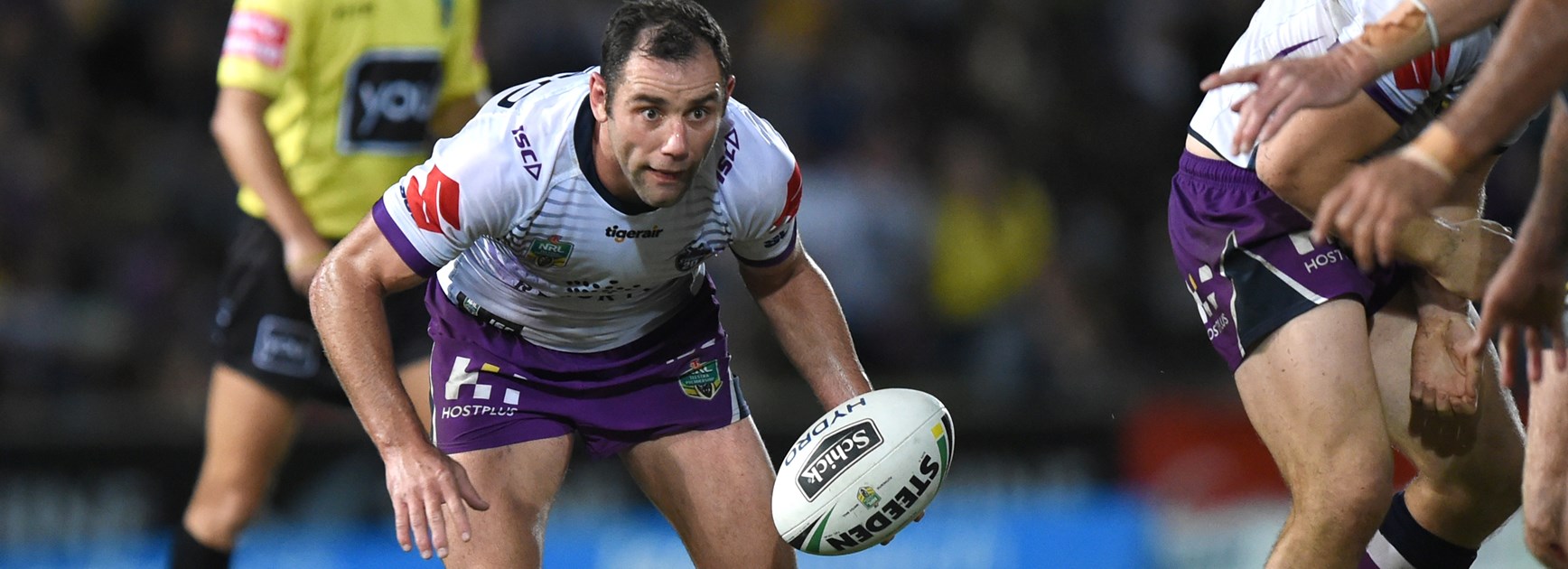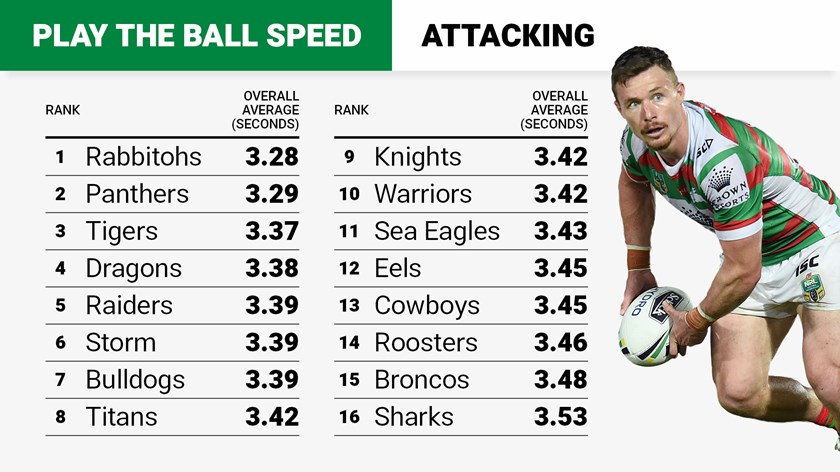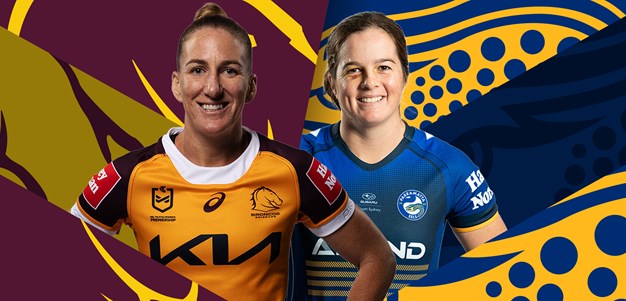
The benefits of earning a fast play-the-ball on attack, or slowing one down while defending, seem obvious – but does it actually translate to on-field success?
It is easy to understand why a fast play-the-ball on attack should be useful. The defence is still backpedalling, a fast dummy-half can scoop up the ball and shoot from the ruck, finding bodies in motion around him while a still-retreating defence struggles to adapt.
It was used to great effect by Damien Cook – and South Sydney – in their 2018 resurgence, with Cook's searing dummy-half scoots off the back of a fast play-the-ball one of the enduring memories of their impressive season.
On the flipside, a defending team who are able to roll a ball-carrier on his back or hold him up in the air for a couple of seconds before then driving him to ground under three or four bodies buys their teammates valuable moments to retreat 10 metres and re-set a stable defensive line.
It seems like something the strongest defensive teams like the Roosters and Storm are able to do at will.
NRL.com Stats crunched the numbers on every team's average play-the-ball speeds in both attack and defence for the entire 2018 regular season and found some interesting results.

Across the whole season, there was remarkably little correlation between winning the play-the-ball and ladder position. Further, there was surprisingly little correlation between PTB speeds and expected PTB speeds, with grand finalists and supposedly prolific ruck wrestlers the Storm finishing sixth when it came to slowing down opponents.
The Sharks, who give the impression of a team which does plenty of wrestling and lying in the ruck, actually conceded the second-fastest PTBs of any team on average, while themselves producing the slowest PTBs of any side on attack.
Despite this net 0.22 seconds per ruck disadvantage, Cronulla still finished top four and were only knocked out one week before the grand final.
The Storm and Roosters finished sixth and 14th respectively for attacking PTB speeds, and sixth and 11th respectively in defence, with the Roosters (-0.11 seconds) among the worst of any club for differential behind only Cronulla (-0.22), the Cowboys (-0.14) and Sea Eagles (-0.13).
So of the "worst" four PTB differentials we had two top-four teams and two bottom-four teams.
At the other end of the scale, the best PTB differential belonged to Penrith (+0.25), who were a finals team – albeit an inconsistent one – followed by the Rabbitohs (+0.20), who were one of the few teams who performed more or less to expectations in the analysis.
However next best were two bottom-eight sides in the Raiders and Titans (both +0.14). Grand finalists Melbourne (-0.05) were bunched mid-table alongside the likes of the Bulldogs (-0.05), Tigers (-0.03) and Eels (-0.02).

So what conclusions to draw from all this?
It is possible some of the teams who have slower PTBs on attack yet still perform well – such as the Sharks, Broncos and Roosters – do so because they have a large number of ball-carriers who earn significant post-contact metres and fight in the ruck for additional ground rather than fighting to find the ground and earn a fast play-the-ball.
However among the teams that seem to use it to good effect, like the Rabbitohs, it emerges that Souths were just as effective at earning fast attacking PTBs in their unsuccessful 2017 campaign as in their 2018 resurgence.
Even more surprising is the fact the Sharks and Roosters concede among the faster PTBs alongside bottom teams Manly, North Queensland and Canterbury.
However you cut it, the end result is that, using the 2018 NRL season as a sample size, there is very little actual correlation between successfully earning fast/slow PTBs and finishing higher up the ladder.
Damien Cook's 2018 season highlights



